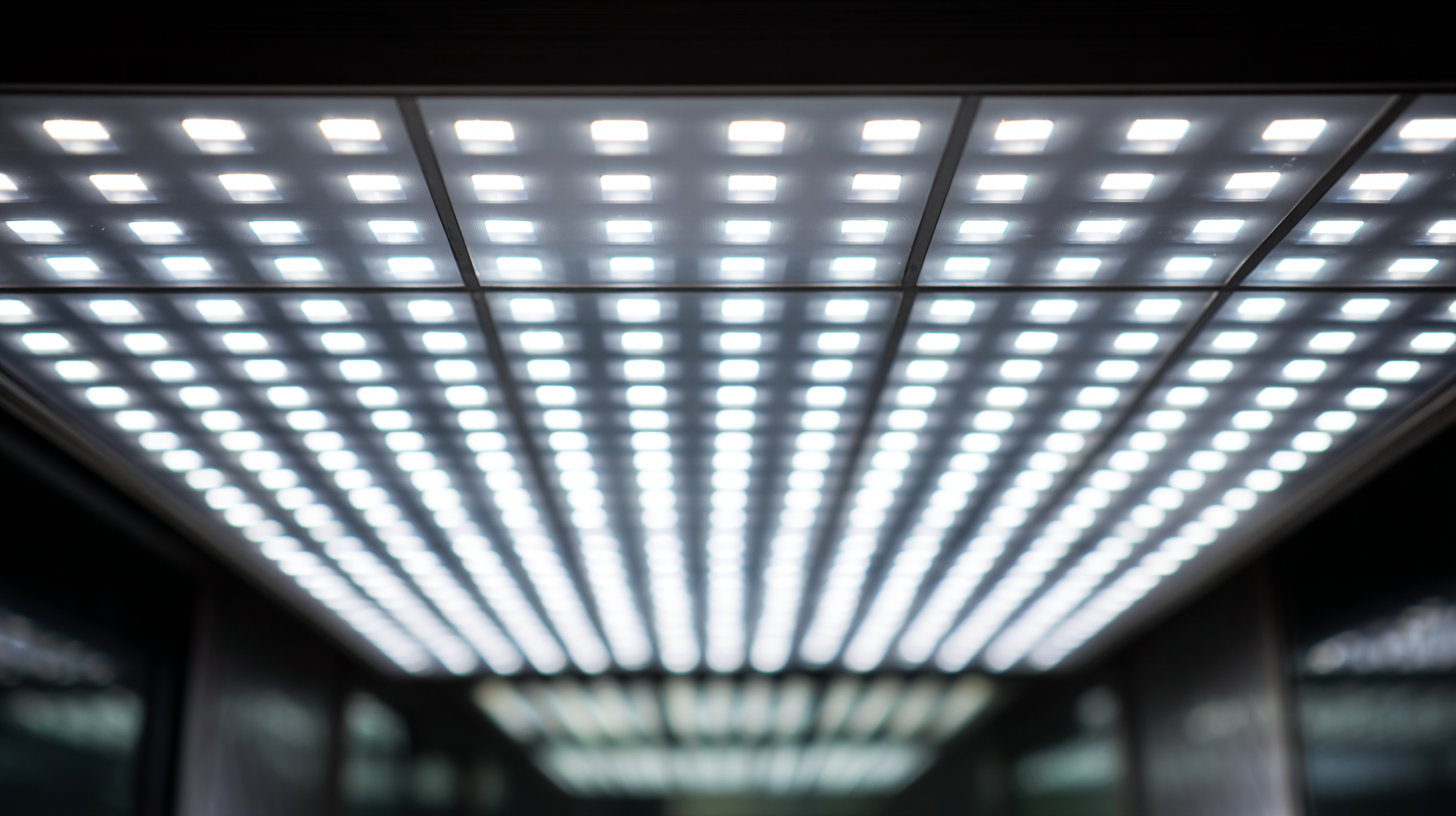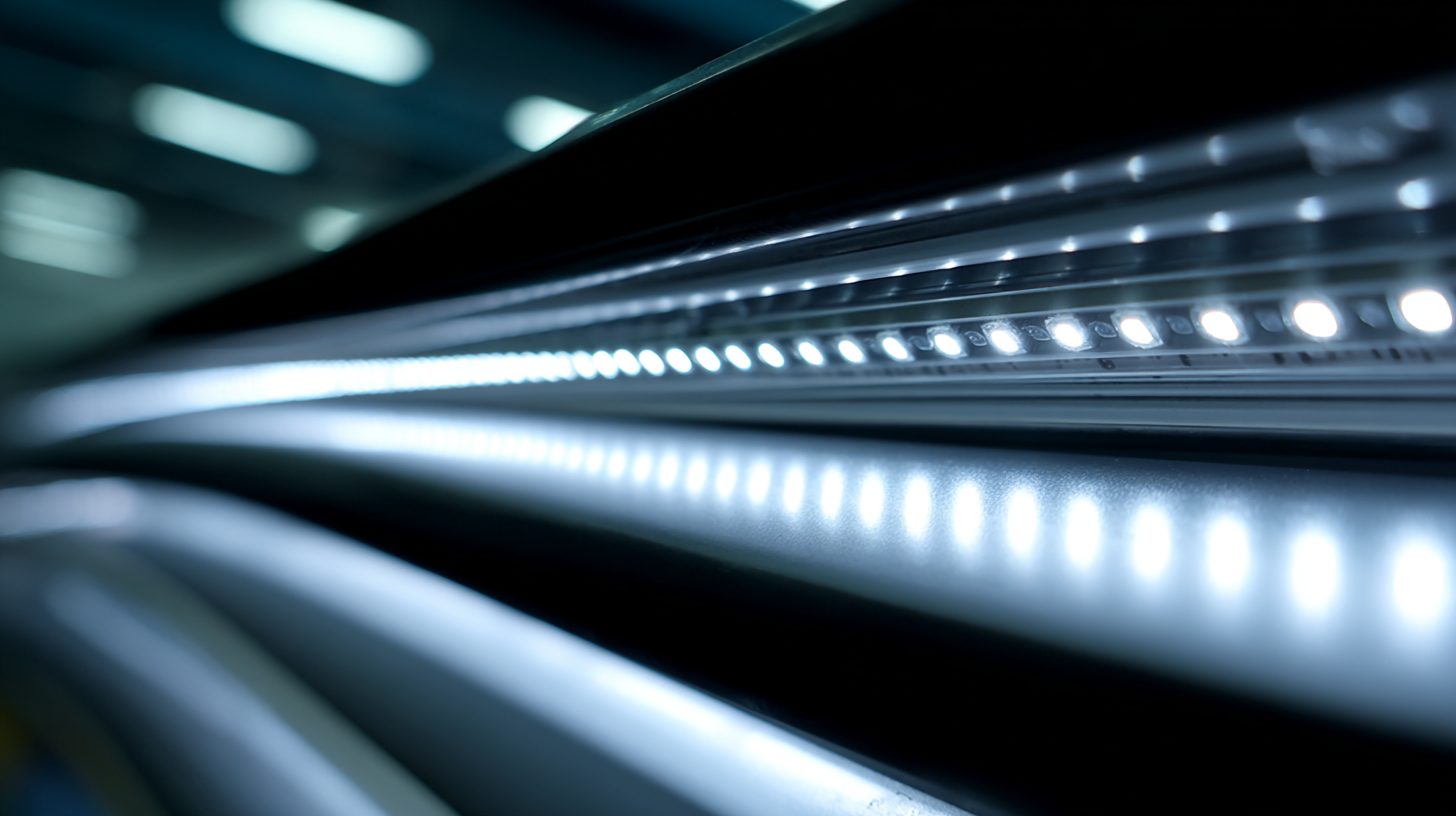Why Panel LED Technology Revolutionizes Energy Efficiency in Modern Lighting Solutions
In the realm of lighting technology, "Panel LED" systems have emerged as a groundbreaking solution that significantly enhances energy efficiency in modern applications. As the demand for sustainable and cost-effective lighting grows, traditional incandescent and fluorescent bulbs are increasingly being replaced by these advanced panel lights. Characterized by their sleek design and uniform illumination, Panel LEDs not only provide brighter and more aesthetically pleasing environments but also consume substantially less energy.

This transformation in lighting design is not just a trend but a vital response to the pressing need for energy conservation and reduced carbon footprints. By leveraging the innovative features of Panel LED technology, businesses and homeowners alike can achieve remarkable savings on energy costs while contributing to a greener future. This article delves into how Panel LED technology revolutionizes lighting solutions, setting new standards for efficiency and environmental responsibility.
Understanding the Basics of Panel LED Technology in Modern Lighting
Panel LED technology is a significant advancement in modern lighting solutions, characterized by its slim design and uniform light distribution. Unlike traditional lighting options, LED panels provide a sleek, minimalistic look while maximizing energy efficiency. These panels utilize a series of LEDs set behind a diffusing surface, allowing for a soft glow that is easy on the eyes. The result is an effective lighting solution for various applications, including offices, schools, and retail spaces.
**Tips:** When selecting panel LED lights, consider the color temperature that best suits your environment. For a calming atmosphere, opt for warmer hues, while cooler tones can enhance focus and alertness in workspaces. Additionally, look for dimmable options that allow you to adjust brightness according to your needs, contributing further to energy savings.
Incorporating panel LED technology not only reduces electricity costs but also contributes to a lower carbon footprint. The longevity of LED panels—often lasting up to 50,000 hours—means less frequent replacements, leading to less waste. This makes them not just a smarter choice for individual users but also a more sustainable choice for the planet.

Key Advantages of Panel LED Over Traditional Lighting Solutions
Panel LED technology has transformed modern lighting solutions by offering substantial advantages over traditional lighting systems. One of the primary benefits is energy efficiency. Panel LEDs consume significantly less power compared to incandescent or fluorescent lights, allowing for substantial energy savings over time. This translates not only to lower electricity bills but also contributes to a reduced carbon footprint, making them an environment-friendly choice for homes and businesses alike.
Another advantage of panel LEDs is their longevity. Unlike traditional lighting, which often requires frequent bulb replacements, panel LEDs have a much longer lifespan, often exceeding 50,000 hours. This durability reduces maintenance costs and minimizes the hassle of regular upkeep. Additionally, panel LEDs provide uniform illumination and are available in various designs, making them versatile enough to fit in any type of space.
Tips: When choosing panel LEDs, consider the color temperature that best suits your environment; warmer tones create a cozy atmosphere, while cooler shades are ideal for workspaces. Also, to maximize energy savings, look for options with dimming capabilities, allowing you to adjust brightness based on the time of day or specific needs. Lastly, ensure you select products with a high Color Rendering Index (CRI) for the best color accuracy in your space.
Energy Efficiency Metrics: How Panel LEDs Reduce Energy Consumption
Panel LED technology is reshaping modern lighting solutions by significantly enhancing energy efficiency. This innovation is particularly crucial in various environments, including educational buildings where energy consumption patterns are often optimized through smart technology integration. By utilizing panel LEDs, institutions can effectively reduce their energy waste, aligning with current trends toward sustainability and lower operational costs.
One of the most compelling aspects of panel LEDs is their ability to lower energy consumption significantly compared to traditional lighting systems. For instance, businesses are increasingly adopting LED technology, with many reporting substantial savings on their energy bills. The shift to LED lighting not only reduces electricity usage but also helps organizations achieve their sustainability goals.
**Tips:** To maximize energy savings, consider retrofitting existing lighting with panel LEDs whenever possible. Also, ensure that your space takes advantage of smart technology that can automatically adjust lighting levels based on occupancy. By implementing these measures, you can create a more efficient and eco-friendly environment without compromising on quality.
Energy Efficiency Metrics: How Panel LEDs Reduce Energy Consumption
| Lighting Technology | Wattage (W) | Lumens Output (lm) | Efficacy (lm/W) | Annual Energy Cost ($) |
|---|---|---|---|---|
| Incandescent Bulb | 60 | 800 | 13.3 | $7.20 |
| CFL (Compact Fluorescent Lamp) | 15 | 900 | 60 | $4.32 |
| LED Panel | 40 | 4000 | 100 | $3.20 |
| Halogen Bulb | 50 | 800 | 16 | $6.00 |
Implementing Panel LED Solutions in Commercial and Residential Settings
Panel LED technology is transforming the landscape of both commercial and residential lighting. According to a report by the U.S. Department of Energy, the adoption of LED lighting can reduce energy consumption by up to 75% compared to traditional incandescent bulbs. This significant reduction not only lowers electricity bills but also decreases the overall carbon footprint, aiding in the fight against climate change.
In commercial settings, the integration of panel LED solutions offers flexibility and scalability. For instance, studies indicate that businesses can see a return on investment within two to three years through energy savings and reduced maintenance costs, as LED panels have a lifespan of approximately 50,000 hours compared to 1,000 hours for traditional options. Residential users also benefit, with the potential to save over $200 in energy costs over the lifespan of a single LED panel. As more homeowners switch to panel LEDs, the cumulative impact on energy conservation is projected to be substantial, making these solutions an essential part of modern lighting designs.
Energy Efficiency Comparison of Lighting Solutions
This chart illustrates the energy consumption of various lighting solutions. As shown, Panel LED technology offers significant energy savings compared to traditional incandescent and CFL bulbs, highlighting its role in improving energy efficiency in both commercial and residential settings.
Future Trends in Panel LED Technology and Its Impact on Energy Efficiency
The future of panel LED technology promises significant advancements that will further enhance energy efficiency in lighting solutions. As manufacturers continue to innovate, we can expect the development of smarter control systems that utilize IoT connectivity. This integration allows for real-time monitoring and adjustment of lighting based on occupancy and ambient light levels, effectively minimizing energy waste.
Smart panel LEDs that can adapt to user preferences and environmental conditions will not only optimize energy consumption but also improve overall user experience.
Additionally, the ongoing advancements in materials and design are set to make panel LEDs even more energy-efficient. Emerging technologies, such as organic light-emitting diodes (OLEDs) and advancements in heat management, are leading to thinner, lighter panels that deliver higher luminosity with lower energy requirements.
Trends toward sustainable production methods will further contribute to energy efficiency by reducing the carbon footprint associated with manufacturing.
As these technologies evolve, we will likely see a broader adoption of panel LEDs across various sectors, including commercial, residential, and urban lighting, ultimately driving a significant reduction in overall energy consumption.

Related Posts
-

Unlocking Global Opportunities: Explore the Future of Flexible LED Panels at the 138th Canton Fair
-

Unveiling the Best Flexible LED Panel with 15 Advanced Features for Ultimate Lighting Solutions
-

5 Essential Tips to Choose the Best Led Film for Your Global Sourcing Needs
-

Discover the Future: 7 Revolutionary LED Technology Trends You Can't Miss
-

8 Best Ways to Illuminate Your Space with Led Spotlights
-

The Ultimate Guide to Designing and Implementing Led Custom Light Solutions for Your Business
